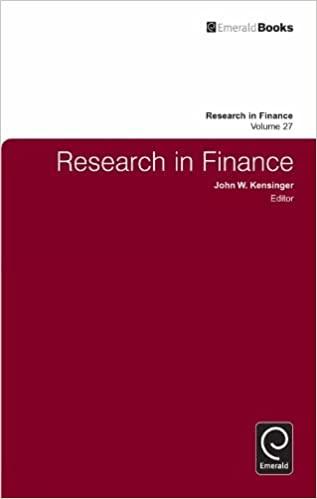Question
Exercise 1 Dividend Valuation Model Part 1. Stock valuation assumes that stock markets participants (firms, financial analysts, investors etc.) are rational economic agents. For these
Exercise 1
Dividend Valuation Model
Part 1. Stock valuation assumes that stock markets participants (firms, financial analysts, investors etc.) are rational economic agents. For these agents (who are making economic decisions based on facts and reason), todays stock value is the present value of future cash flows that will accumulate in the stock. Rational economic agents use time value of money (chapter 4) to determine the stock price of today from the discounted future cash flows value.
At period (t = 0), suppose that stockholders could buy the stock at price (P0 in dollar) and demand a rate of return on common stock (r) as a compensation from future cash flows risks (such as risks from inflation) and the effect of the time value of money. Suppose the firm issues a constant dividend (D1) per share of common stock from next period (t = 1), and thereafter in perpetuity. Hence, D1 = (P0) x (r), which reads P0 multiplied by r.
- If the Google share sells at $2,915.00 this period and the investor demands 12% return, how much is the expected dividend in next period?
- At a time of great uncertainty and risk, one specific investor demands 17% return. The firm is expected to issue a constant dividend D1 = $3.40 per share of common stock next period and the current stock price is $21. Would this specific investor buy the stock? Why?
Part 2. The Dividend remains constant (does not grow) period by period, which means that the Dividend grows at rate g = 0% in Part 1. However, the Dividend could grow at positive rate (g > 0%) or decline at negative rate (g < 0%), which affects the buying or selling decision of the investor.
The Gordon Model (by Myron J. Gordon (1962). The Investment Financing, and Valuation of the Corporation, Homewood: Irwin.), or dividend valuation model (DVM), allows to price the stock with the present value of all future dividends, knowing the current Dividend paid (D0) and constant grow rate g. Suppose that the investor demands a rate of return (r). The Dividend (D1) next period will be D1 = (D0) x g such that the present value of the common stock is:
P0 = (D1) / (r g) = (D0) x (1 + g) / (r g).
2. The current dividends are $5 per share and the expected growth rate of the dividend is 12%. Suppose the investor demands 17% return. What is the value of the share of stock?
The current dividends are $1.20 per share and the dividends are expected to decline each year at a rate of 2% per year, in perpetuity. Suppose the investor demands 10% return. What is the value of the share of stock?
Exercise 2
Future Cash Flows Projections
Ogier Incorporated currently has $800 million in sales, which are projected to grow by 12.5% in Year 1 and by 5% in Year 2. Its operating profitability ratio (OP) is 10%, and its capital requirement ratio (CR) is 80%.
1. What are the projected sales in Years 1 and 2? What are the projected amounts of net operating profit after taxes (NOPAT) for Year 1 and Year 2?
2. What are the projected amounts of total net operating capital (OpCap) for Years 1 and 2? What is the projected FCF for Year 2?
Step by Step Solution
There are 3 Steps involved in it
Step: 1

Get Instant Access to Expert-Tailored Solutions
See step-by-step solutions with expert insights and AI powered tools for academic success
Step: 2

Step: 3

Ace Your Homework with AI
Get the answers you need in no time with our AI-driven, step-by-step assistance
Get Started


